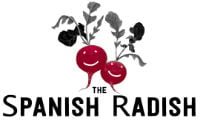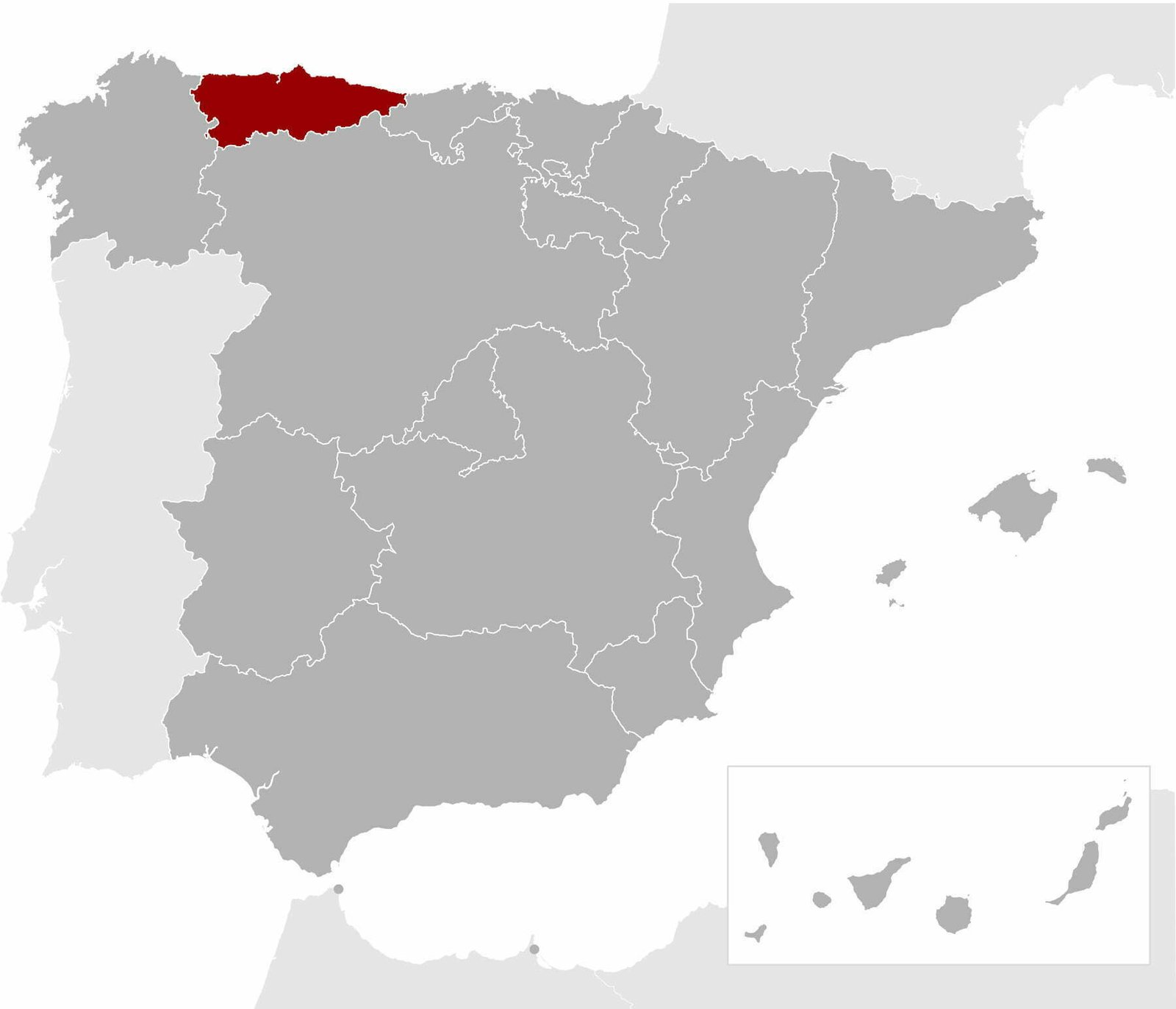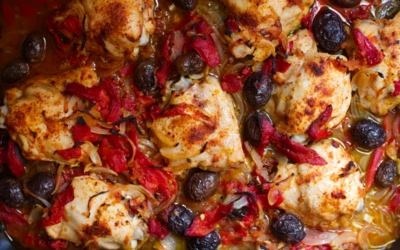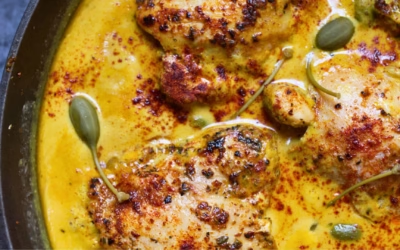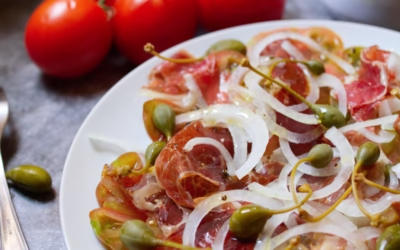Asturias Regional Guide
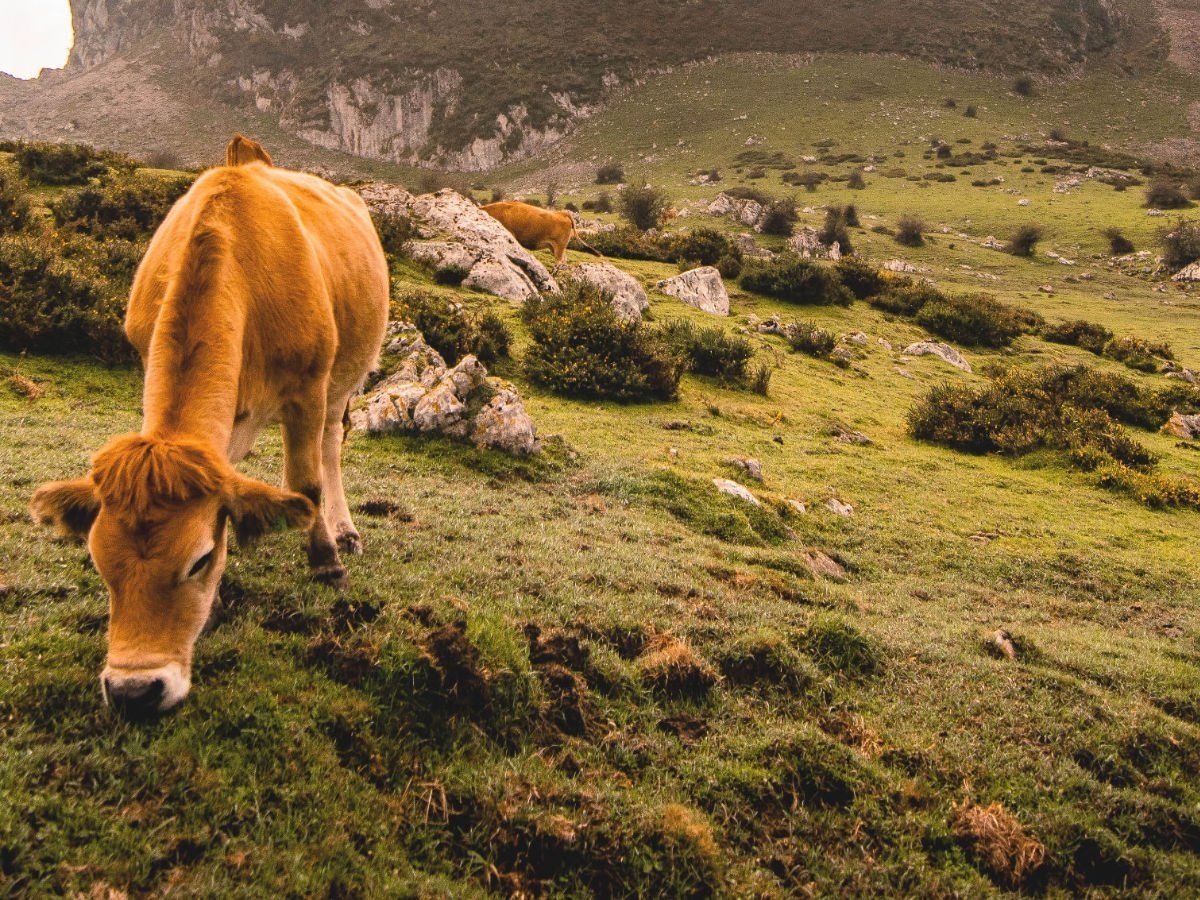
Asturias, above any other region in Spain, offers some of the greatest diversity in cuisine that blends sea and mountain ingredients, with premium-quality beef, fish, and cheeses, as well as shellfish, fine wines, and ciders. Our Asturias regional guide will take you on a culinary tour to explore this exceptional region of Spain.
Produce of Asturias
While many Asturian exports never leave the shores of Spain, there are a number of famous products that have graced dinner tables all around the world. Asturias produces a wide range of high-quality fresh and seasonal produce, and notable items such as Cabrales (blue cheese), Asturian clams, rainbow trout, or the many varieties of dried sausages are among some of Spains most exported delicacies.
Fruit and Vegetables
In the luscious green valleys of the region, many various fruit trees thrive, with apple orchids scattered throughout the entire region, used to produce excellent quality cider (sidra). Asturians have taken cider production and consumption and made it into an art form, with even specialist cider servers who pour your drink from a great height into a glass to allow it to breathe and enact the rich flavors.
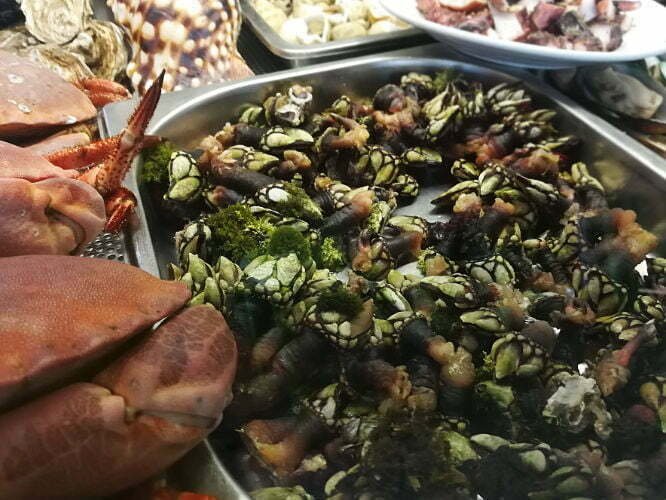
Seafood
Asturias is best-known for producing excellent quality seafood with the region skirting a rugged coastline that’s dotted with quaint coastal fishing villages. The fishing boat leaves in the darkness of dawn and returns loaded with their catch of fresh squid, crab, shrimp, and sea bass.
Asturias is also one of Spain’s leading regions for salmon production. Fresh Atlantic Salmon (Salmo salar) are caught in many of the Asturian rivers, notably the Sella river that flows from the Picos de Europa to the Bay of Biscay.
Another favorite amongst anglers, restaurants, and foodies is the rainbow trout, with a majority of the high-grade fish caught being sent to famous restaurants in Madrid, Barcelona, and Valencia.

Grazing and Livestock
The inland region is very mountainous, with moist fertile soil and high rainfall offering excellent natural grazing for sheep, cows, goats, and other livestock. Dairy farms also dot the landscape of Asturias, especially at higher altitudes such as around the many mountain ranges such as Picos de Europa and the Cantabrian Mountains, where exceptional quality dairy products can be found.

Cider from Asturias
Cider (Sidra) in Asturias is made throughout the region using the acidic apples that grow within the many apple orchids perched in the mountainous zones. There are 76 varieties of apple and cider processes n that are recognized and approved by the Asturian regulatory body and given the official DOP label (denomination of origen protegida).
Unlike other ciders, Asturian cider does not use carbon dioxide to give its fizz. It is a cloudy cider that has a soft flavor and a slightly tart aftertaste, and instead of carbon dioxide relies on expert servers (escanciador) to pour the cider from above head height into a glass below their waist.
Escanciar masters pour (or “throw”) the cider and this causes the volitation of the acetic acid and invigorates the aromas and flavors within the cider. It is a sight to behold in many of the local sidrerias (cider bars) that are dotted throughout the region of Asturias.
If you’re really in love with the aromatic flavors of Asturian cider, then you can’t go past the many dishes and recipes that Asturians have created featuring cider. One particular highlight that must be tried is “Chorizo a la Sidra”, literally Spanish chorizo (sausage) that has been boiled in cider.
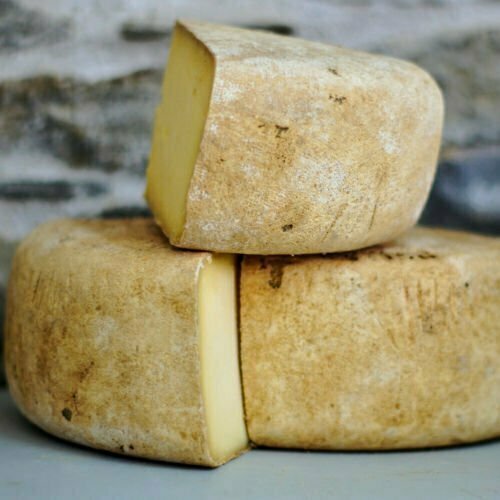
Cheese of Asturias
Asturias is often referred to as the land of cheese,and there are more than two dozen varieties of cow, sheep and goat’s milk cheeses produced in Asturias. One particular cheese that must be tried when visiting is Cabrales, a blue cheese that’s often made by blending goat and sheep milk and have a strong spicy flavor.
Artisanal methods of making Cabrales are respected and handed down through generations, with rural dairy farmers based around the mountainous area of Picos de Europa for animal grazing.
Dairy farmers still use centuries-old limestone caves for storing the cheese during the curing and aging process that’s between 2 and 5 months. For production for sale of the cheese, it is sold wrapped in the moist leaves of the Sycamore Maple.
Some other popular cheeses from the Asturias region include Afuega’l pitu, Casín, Gamonéu and Beyos. Most of these cheeses are hard cheese and have a strong smoked flavor.
Afuega’l pitu is a hard cheese made from unpasteurized cow’s milk and is one of four kinds of cheese of the region to have been recognized with protected Designation of Origin (D.O.) by Spain.
Most Popular Cheeses from Asturias;
- Cabrales
- Afuega’l pitu
- Quesu de los Beyos
- Casín cheese
- Gamonéu cheese
- La Peral cheese

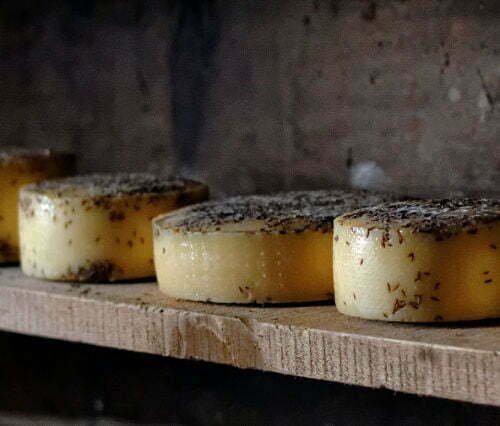
Regional Dishes of Asturias
Heading to Asturias for a meal is a journey of pure joy, with so many restaurants and bars to choose from. The region and its people certainly carry a more relaxed vibe compared to any of the major cities of Spain, but they make up for it with an unfathomable excitement for fresh ingredients and superior cuisine.
With its rugged coastline, it’s no wonder that Asturias is an excellent place to experience fresh seafood. However, it is the quality (and quantity) of delicious meat dishes that entice many visitors to come back again and again.
One of the most famous regional dishes is fabada Asturiana which is a rich and hearty stew made with Asturian white beans (fabes de la Granja), pork shoulder (llacón), morcilla, chorizo, and saffron (azafrán).
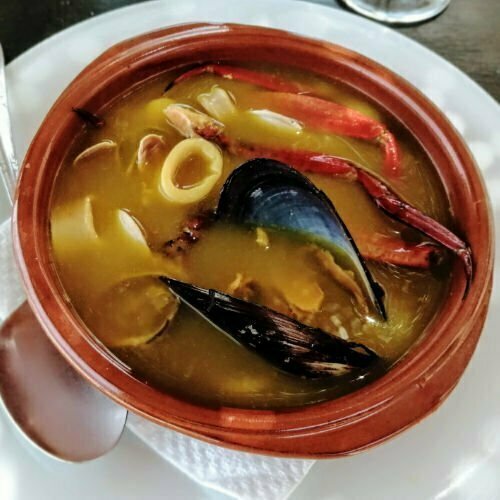
Popular dishes from the Asturias region;
- Chorizo a la Sidra (Chorizo cooked in Cider)
- Fabes con almejas (beans with clams)
- Asturian stew
- Pitu de Caleya (Chickens that feed on seeds, corn, and herbs are called pitu de caleya)
- Fritos de pixín (monkfish fritters)
- Cachopo
- Caldereta: Fish Stew
- Merluza a la Sidra: Hake in Cider
- Salmón a la Ribereña: Salmon with Cider Asturian Style
- Carne Gobernada: Asturian-Style Beef in White Wine
- Scallops with Black Pudding, potatoes, and a romesco sauce
- Salmon en papillote on spinach with warm tomato and anchovy dressing
- Cockles with asparagus, peas, and mint
- Pastel de cabracho

Desserts from the Asturias region;
Desserts in Asturias are nothing short of spectacular and have gathered acclaim from the sweet-toothed crowd the world over. With a thriving dairy industry and dessert recipes that date back centuries, there’s something that will be the exclamation point after every meal.
With national fame, the Arroz con leche is by far the favorite throughout Asturias and must not be missed. This humble combination of cold rice pudding, cinnamon, and a golden crust of caramelized sugar is simply irresistible.
With an abundance of apple orchards, the tortilla de manzana is found throughout Asturias. This dish is very surprising and combines the cooking technique of a Spanish tortilla (omelet) with that of a sweet apple tart. Sweetened with some brown sugar and spiced with a little cinnamon or nutmeg and this dessert is outstanding, especially when topped with a little fresh cream.

A few of our (well-sampled) favorite Desserts
- Arroz con leche: A refreshing dish made of cold rice pudding, sprinkled with cinnamon or served with a slightly golden crust of caramelized sugar on top, is one of the most popular desserts in Asturias.
- Frixuelos: Often called fayueles or frixuelos in Asturias, these crepes are often made with pork blood instead of milk. They are typically served during a carnival
- Tortilla de manzana: Apple tart
- Casadielles or Bollinas de NuezSpanish Walnut-Filled Bollinas: These sweet little empanadillas or turnovers are filled with chopped walnuts that have been soaked overnight in anise liqueur and sugar.
- Quesada Asturiana (Asturian cheesecake): This traditional cheesecake is made with fresh goat cheese and decorated with dried or fresh fruit and/or powdered sugar.
- Charlots of Gijón: Cakes made with a base of biscuits smothered with rich with chocolate and candied cherries)
- Marañuelas of Candás and Luanco: Characteristic sweet cookies
- Maravilles of Avilés (sweet bread),
- Paserine councils (typical of Mieres)
- Almond cake: similar to the Santiago cake, made with puff pastry and/or sweet broken dough and filled with a mixture of egg, almond, and syrup
Our Blog
Spanish Chicken Thighs with Roasted Peppers and Olives
Spanish Chicken Thighs with Roasted Peppers and Olives An Easy-To-Make, Flavor-Packed Classic That Brings Spain to Your Table A mouthwatering recipe for those busy weeknight dinners: Spanish Chicken Thighs with Roasted Peppers...
Spanish Chicken in Creamy Mustard Sauce – Pollo a la Mostaza
Spanish Chicken in Creamy Mustard Sauce - Pollo a la Mostaza An Easy, Flavor-Packed Classic That Brings Spain to Your Table When it comes to rustic, comforting Spanish cuisine, Pollo a la Mostaza — chicken in creamy mustard...
Tomato, Ham, and Onion salad – Ensalada de tomate con jamón
Tomato, Ham, and Onion Salad - Ensalada de tomate con jamón We Are Bringing Back another timeless Classic salad Recipe This Summer - Ensalada de Tomate con Jamón 🇪🇸 🍅 Bright, bold, and bursting with Mediterranean flavor,...
